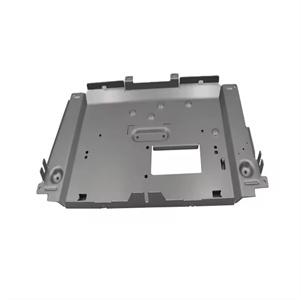Sheet Metal Stamping products can also be blackened due to their large volume. Blackening treatment is a chemical surface treatment process that can form a dense oxide film on the surface of a metal to improve its corrosion resistance, wear resistance, and decorative properties. This treatment process is not limited by the size of the product, as long as the shape and material of the product are suitable for blackening treatment, it can be carried out.
However, for large sheet metal stamping products, blackening treatment may require more time and resources as it requires processing a larger surface area. In addition, special equipment and techniques may be required to ensure the effectiveness and uniformity of blackening treatment.
Additionally, it should be noted that blackening may have a certain impact on the size and accuracy of Sheet Metal Stamping, although this impact is usually minimal. Therefore, before conducting blackening treatment, it is necessary to carefully evaluate the size and accuracy requirements of the product, and take corresponding measures to reduce this impact.
Sheet Metal Stamping products can also undergo blackening treatment due to their large volume, but it is necessary to choose the appropriate treatment process and parameters based on the specific situation of the product, and ensure that safe operating procedures are followed during the treatment process.
The blackening treatment of Sheet Metal Stamping mainly has the following effects:
Corrosion prevention: A layer of oxide film is formed on the surface of the metal, which can effectively prevent the external environment from corroding the metal, improve the rust prevention ability of sheet metal stamping parts, and extend their service life.
Aesthetics: Give the parts a black appearance, making them more visually appealing in certain applications or matching the overall design style.
Increase surface hardness: To some extent, increase the hardness of the metal surface and enhance its wear resistance.
There are various methods for blackening treatment, including chemical blackening and high-temperature blackening.
Chemical blackening is the formation of a black oxide film by reacting chemical agents with metal surfaces. High temperature blackening refers to heating a metal component to a certain temperature, causing its surface to oxidize and form a black oxide layer.
In practical applications, if sheet metal stamping parts need to be used in harsh environments or have specific requirements for appearance, blackening treatment is an economically effective choice. For example, some sheet metal stamping parts of mechanical components and hardware tools may undergo blackening treatment to enhance their rust resistance and improve their appearance.
